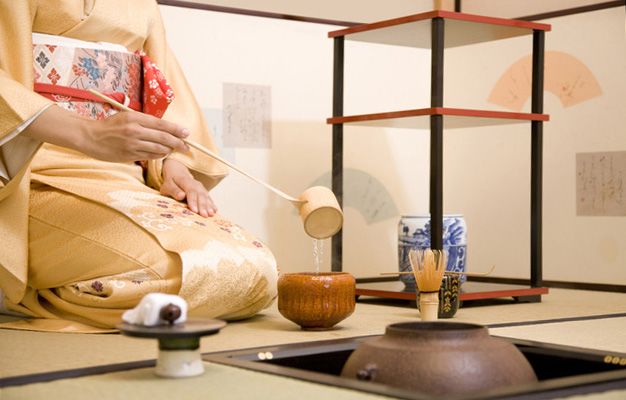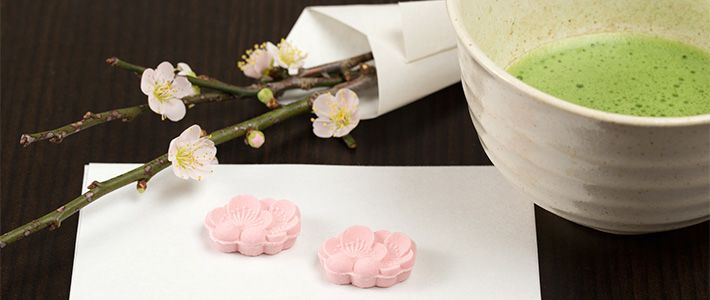
The Japanese Tea Ceremony
Society Culture- English
- 日本語
- 简体字
- 繁體字
- Français
- Español
- العربية
- Русский
Paving the “Way of Tea”
The Japanese tea ceremony is a highly structured ritual centered on the preparation, service, and consumption of steaming bowls of matcha. Known as sadō, chadō, or chanoyu, the centuries-old rite is steeped in Zen Buddhist thought and practice and combines art, appreciation of nature, and social interaction.
Tea first made its way to Japan from China in the eighth century CE as part of the spread of Buddhism. During the early Kamakura period (1185–1333) Eisai, the founder of the Japan’s Rinzai sect of Zen, introduced Chinese tea seeds for domestic cultivation along with methods for making and drinking powdered tea, or matcha. The beverage quickly gained popularity among Buddhist monks and eventually spread throughout the country.
In the Muromachi period (1333–1568) members of the warrior and aristocratic classes frequently held chakai, lavish banquets where guests enjoyed carefully prepared bowls of matcha. These often raucous affairs—sake was also served in abundance—were opportunities for the elite to showcase choice items from their collections, including imported ceramic ware from China, elegant hanging scrolls and paintings, and expensive tea utensils. However, Murata Shukō, tea master of the eighth head of the Muromachi shogunate Ashikaga Yoshimasa, put a stop to the consumption of sake, gambling, and other excesses that characterized chakai and encouraged wabicha, an approach that emphasizes the spiritual aspect of the tea ceremony.
The sixteenth century tea master Sen no Rikyū (1522–91) would later transform wabicha into a solemn, spiritual event concentrating on the ideas of harmony, respect, purity, and tranquility. This has become the basis of the tea ceremony as it is known today.
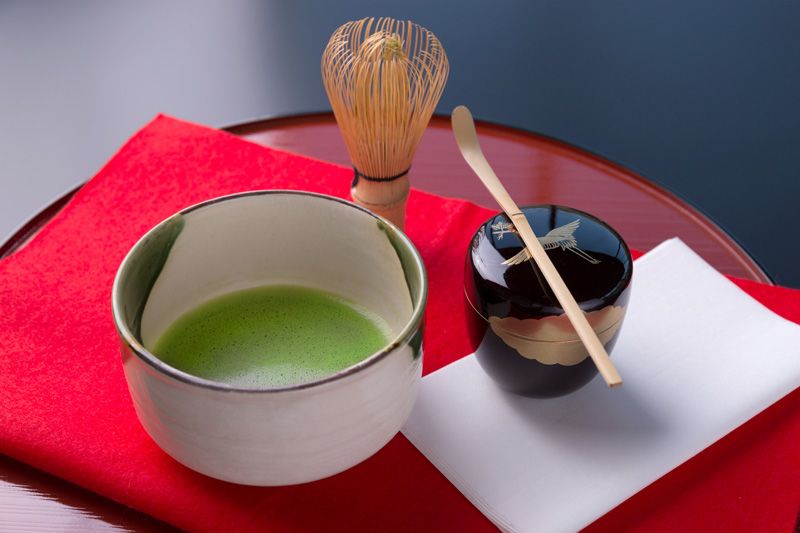 From left, a chawan (tea bowl), chasen (bamboo whisk), and chashaku (bamboo tea scoop) sitting on top of a tea container.
From left, a chawan (tea bowl), chasen (bamboo whisk), and chashaku (bamboo tea scoop) sitting on top of a tea container.
Refining the Art of Tea
In perfecting the tea ceremony, Rikyū taught appreciation for the simple, rustic beauty of objects, an aesthetic expressed in Japanese as wabi sabi. To heighten the senses of participants he would make tea in a small, bare room the size of two or three tatami mats (one mat being a little more than 1.6 square meters). The only entrance into the chamber was a narrow nijiriguchi, a low door that guests had to crouch to pass through. (In addition to stressing the equal humility of all participants, who had to bow deeply as they entered, it is said that this type of entrance was also meant to prevent warriors from bringing their swords into the chamber, thus preserving its peaceful atmosphere.)
Tea was served not in expensive vessels, but simple bowls. Prior to entering the tea hut, guests would prepare themselves in an adjacent roji or small garden recreating the calming, natural confines of a mountain temple. Even the lighting and décor of the hut was an expression of the spirit of the tea ceremony, and many of the architectural facets embraced by Rikyū continue to influence modern buildings.
The disciples of Rikyū carried on his teachings, developing these into the schools of Omotesenke, Urasenke, and Mushakōji-senke. These ryūha share many core elements, but differ in aspects like the preparation methods for tea and types of utensils used.
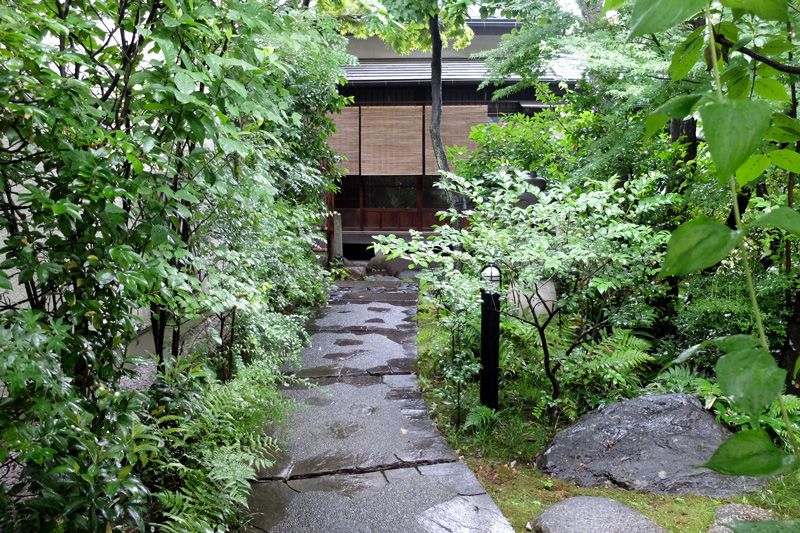 The roji provides a natural environment for guests to relax before entering the tea hut.
The roji provides a natural environment for guests to relax before entering the tea hut.
Manners and Etiquette
Today, Omotesenke and Urasenke are Japan’s leading schools, with millions of followers. Students generally attend classes to learn the specific manners and etiquette of the different forms of the tea ceremony under the tutelage of an experienced practitioner. New pupils must obtain the necessary accessories for the tea ceremony, including a silk cloth for ritual cleansing known as a fukusa, a folding fan used when greeting others at the ceremony, and a cloth carrying case called a fukusabasami. If guests have been invited to a tea ceremony then students are also commonly called on to provide such items as serving trays, paper kaishi that act as plates, and small yōji picks for eating sweets. These rudimentary goods are available at dedicated stores and on the Internet. Classrooms usually provide students a selection of tea bowls along with a kama (kettle) for heating water.
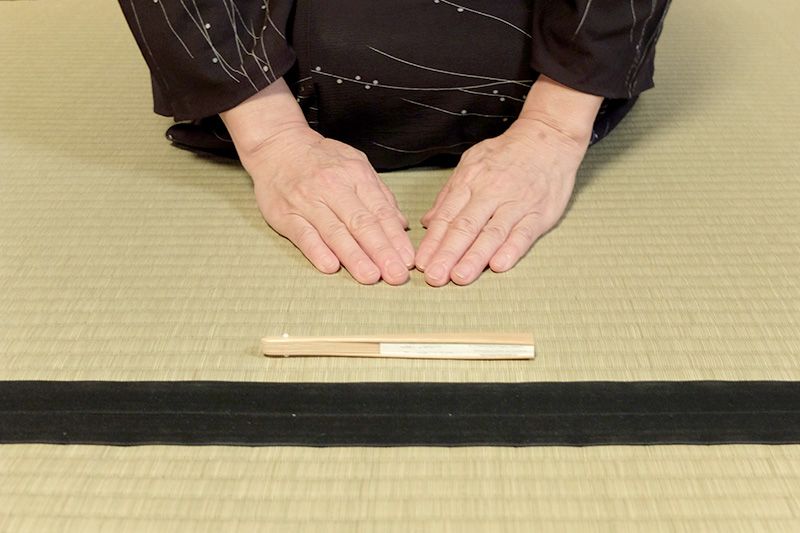 Participants set a folding fan on the tatami mat in front of them when greeting others at the service.
Participants set a folding fan on the tatami mat in front of them when greeting others at the service.
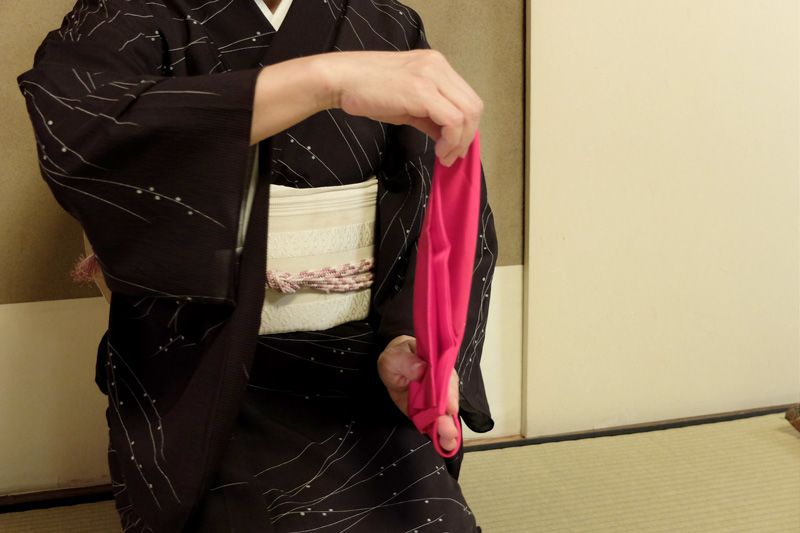 A silk fukusa serves to ritually purify tea utensils.
A silk fukusa serves to ritually purify tea utensils.
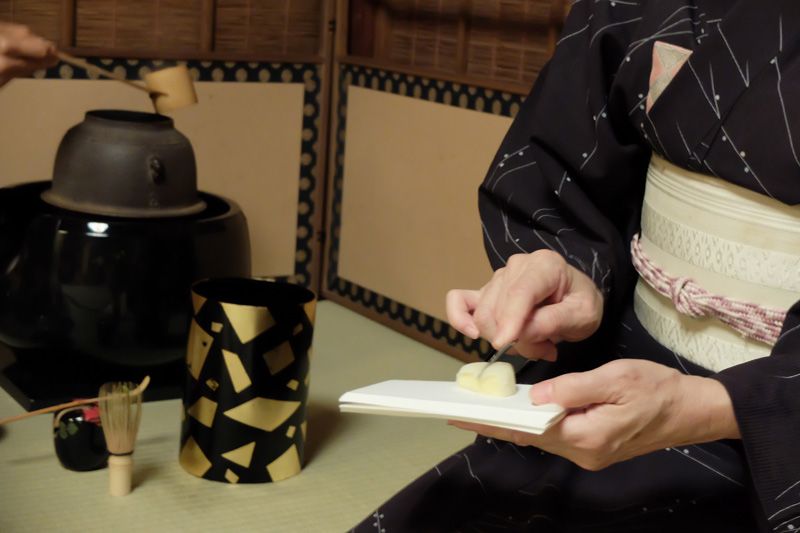 Sweets are placed on paper kaishi and eaten using a yōji.
Sweets are placed on paper kaishi and eaten using a yōji.
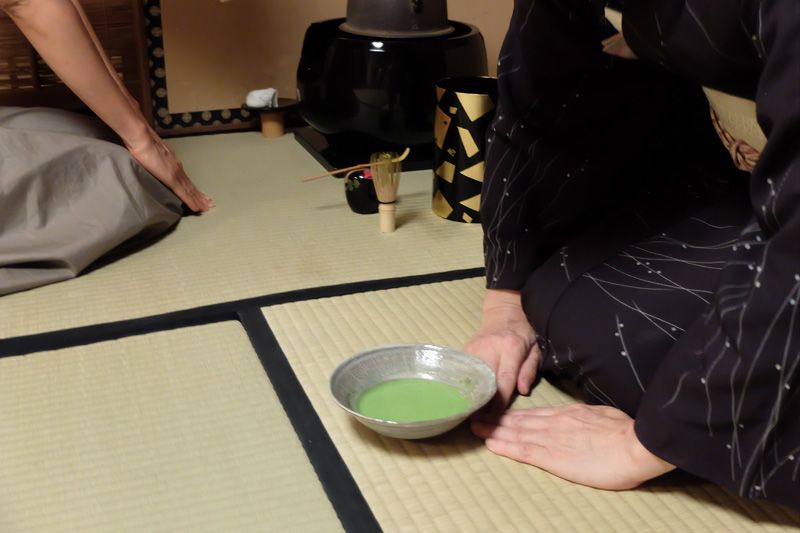 A participant prepares to partake in a bowl of usucha or thin tea.
A participant prepares to partake in a bowl of usucha or thin tea.
Tea ceremonies are formal occasions and guests should take care to choose a kimono or Western-style suit that has subdued tones. They should refrain from wearing wristwatches and other accessories that could accidentally nick the tea bowl and avoid perfume or cologne that may overpower the surrounding fragrance of tea and incense. Finally, to maintain the purity of the tea room participants are expected to change into a fresh pair of white socks or tabi before entering.
Foreign Aficionados
Interest in the tea ceremony continues to grow among people overseas and visitors to Japan. Many non-Japanese practitioners are drawn to the rite through Zen Buddhism, while others delight in the decorative sweets and the strong taste of matcha. In recent years events such as the annual International Tea Gathering at the Urasenke Chado Kaikan in Kyoto have seen a steady uptick in foreign participants.
Those looking to experience the way of tea on a more intimate scale can make arrangements at shops catering to foreigners, including Motenas Nihon or Asakusa Jidaiya in Tokyo. Many establishments have multilingual staff and even offer to take commemorative pictures of guests dressed in traditional attire. The Midorikai at the Urasenke headquarters in Kyoto offers courses specifically designed for non-Japanese students of tea. There are also numerous venues in Kyoto and Kamakura that offer matcha along with traditional refreshments, including hotels, temples, cafés inside parks, and tea shops.
